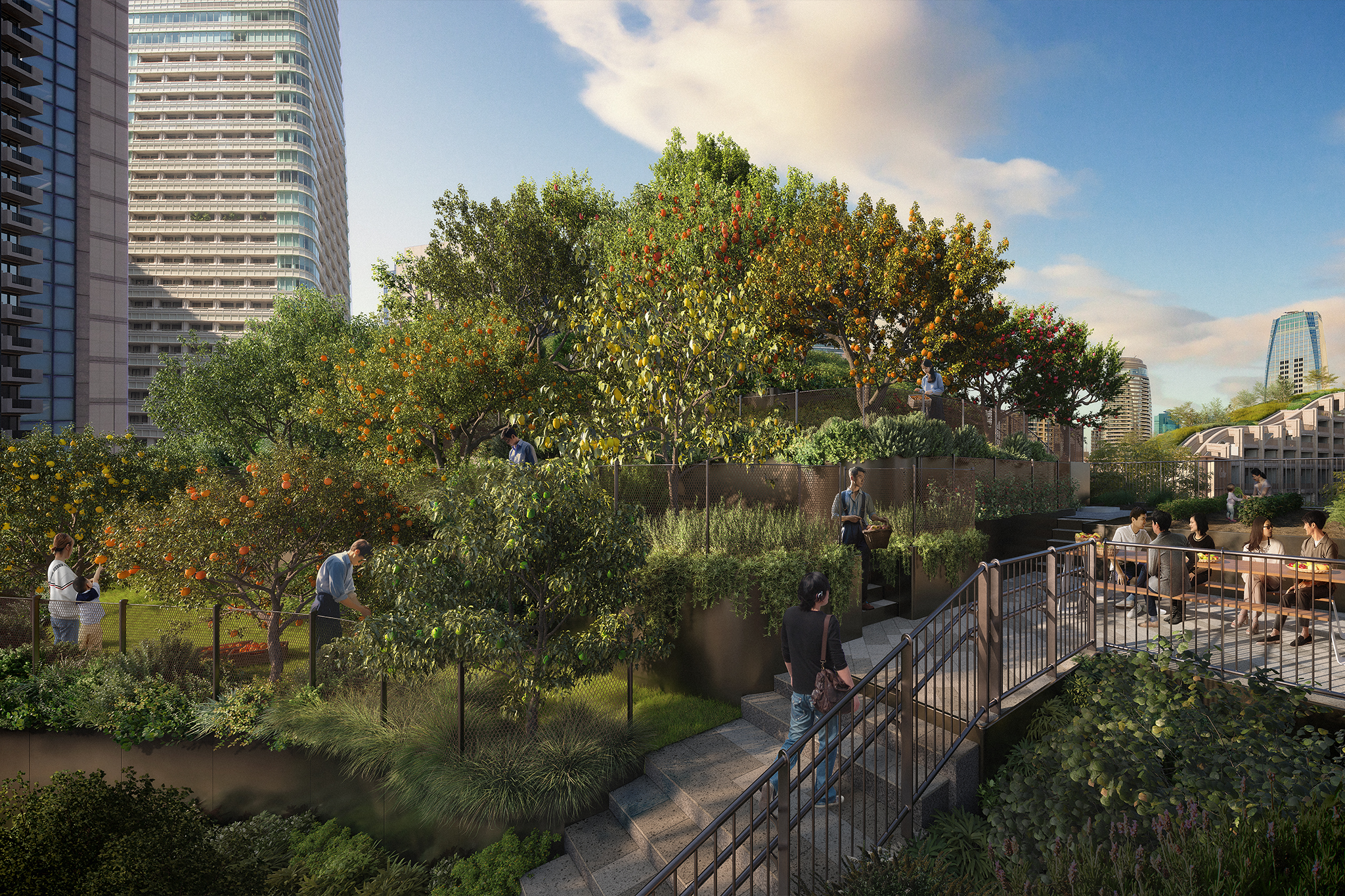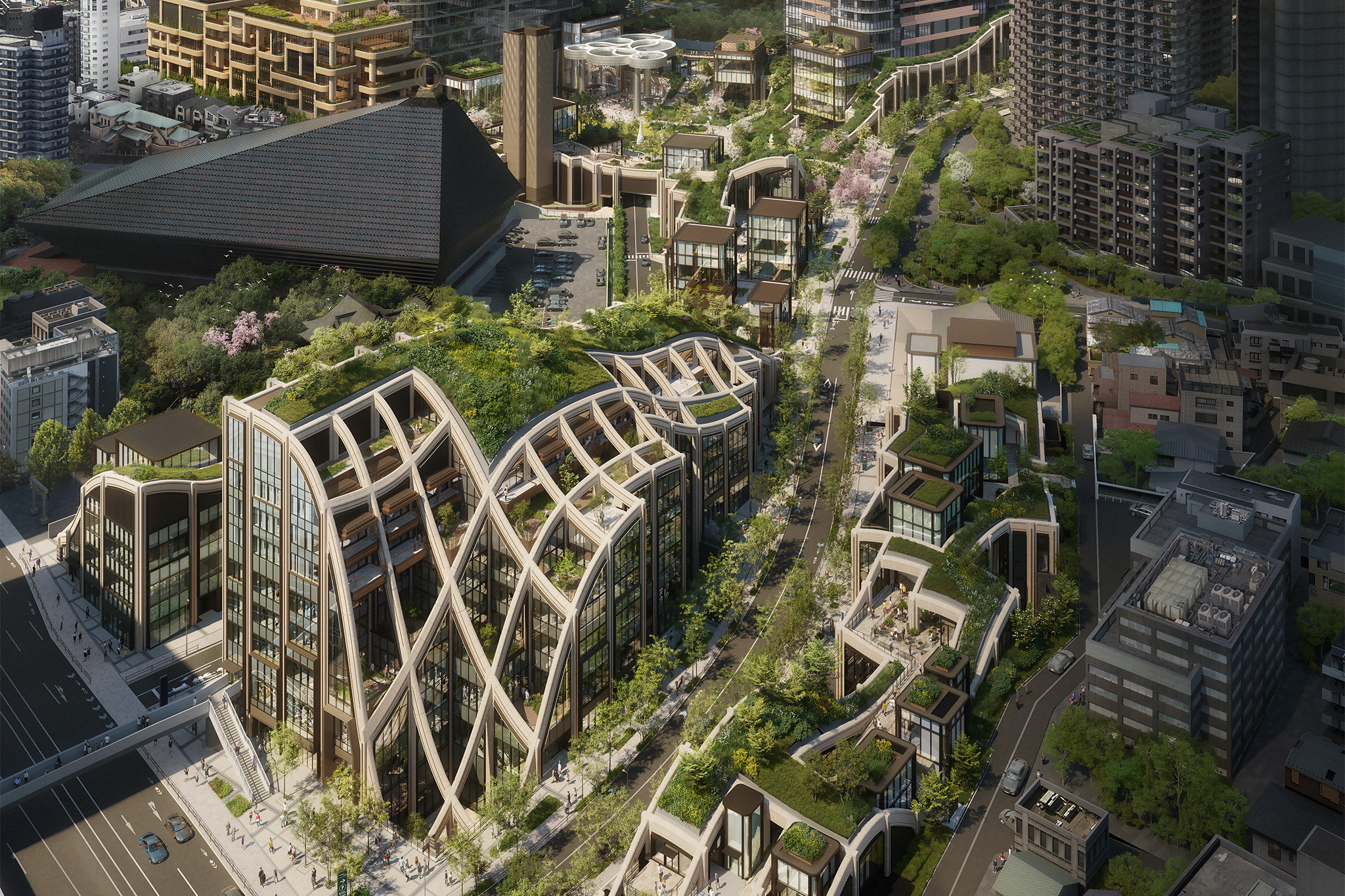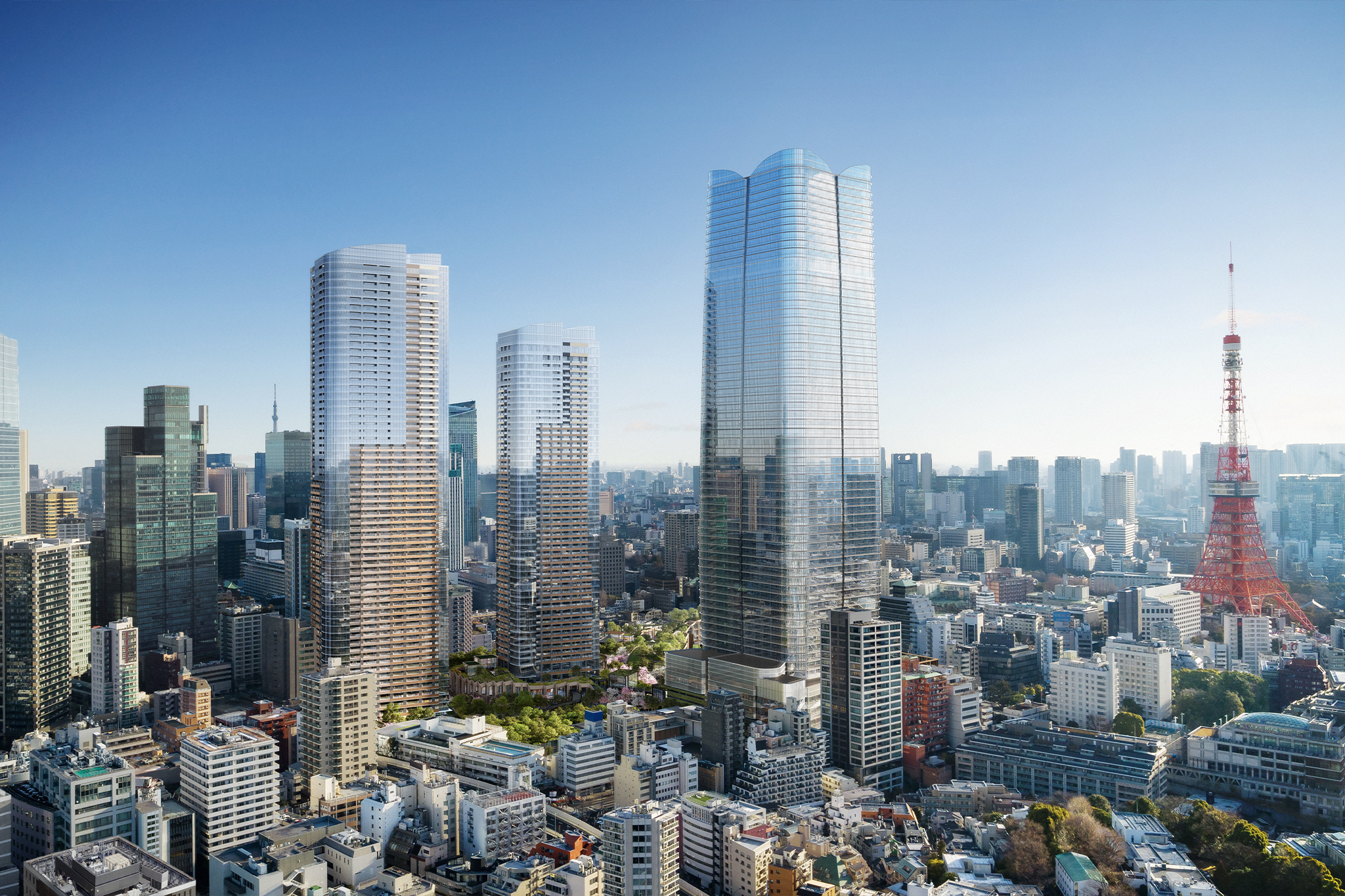Most Tokyoites will be familiar with Motoazabu Hills, a giant tree trunk of a building that’s become an iconic — not to mention luxurious — block of real estate in Minato ward. Owned by urban developer Mori, the snazzy apartment complex embodies the mega-corporation’s “Forest City” concept, aimed at harmonizing the city with nature. To that end, more than half the site is covered in greenery, with gardens sprouting from roofs and balconies, and sloping lawns surrounding the main tower.
“It is not that there must be a forest in the city,” states the company mantra, “the city itself must be a forest.” This might come across as hopelessly utopian, but you can’t fault the ambition. As the world’s most populous metropolitan area, a great deal of Tokyo land has been allocated for residential living. This naturally eats up available green space, thereby saturating the city of color.
Only 7.5% of Tokyo’s 23 wards account for public parkland. This is put into perspective when compared with the verdant capital cities of Europe — London (33%), Madrid (35%), Stockholm (40%) and Vienna (45.5%). We should, therefore, applaud any vision that seeks to make Tokyo greener; to spruce up its concrete canyons with rooftop gardens, tree-lined avenues, vegetable allotments and urban topiaries.

Luscious Greenery | ⒸDBOX for Mori Building Co., Ltd. – Azabudai Hills”
A Modern Urban Village
The next piece in Mori’s Forest City puzzle is Azabudai Hills, a “Modern Urban Village” that’s set to be opened to the public in November this year (though one of the main buildings is still under construction and will struggle to meet its deadline date). Unlike Motoazabu Hills, which is primarily gatekept for residents, Azabudai Hills will have a broader appeal to the public.
The multipurpose project features three high-rises – including the 64-story Mori JP Tower, the nation’s tallest office building — with workspaces, residences, a hotel, an international school, retail areas, restaurants and a digital art museum run by Epson and TeamLab.
The three landmark, glass-walled towers were designed by Pelli Clarke & Partners, a US-based architecture firm with an impressive resume that includes Union Park in Toronto, San Francisco’s Parcel F and the new Yibin Station Gateway Development in Sichuan, China. Having dabbled in urban projects that fuse the natural with the manmade, Pelli Clarke was a natural collaborator to help Mori’s grand plan come together.
It’s a plan that had been simmering for quite some time. In fact, it spent 30 years on the drawing board before coming to fruition and was devised around questions that far too few urban planners address, such as, “what should a future city be like?” and “what is the essence of a city?”

A modern urban village | ⒸDBOX for Mori Building Co., Ltd. – Azabudai Hills”
Structure and Environment as One
The developers used the area’s topography to ensure the structures and the environment worked as one cohesive unit. They envisioned the three towers “melting into the lush greenery” of Azabudai Hills’ central plaza, a broad lawn with shrubs, flowers and cherry trees. Though this is the centerpiece, it holds only a fraction of the 24,000 square meters of total green space. Elsewhere, greenery thrives on low-rise rooftops, podium buildings and around the complex perimeter.
This design philosophy puts emphasis on the end-user and helped Azabudai Hills become one of the world’s largest sites to receive preliminary WELL certification. WELL champions the relationship between buildings and people, using performance indicators like air and water quality, use of light, fitness options and general living standards.
As Tokyo knuckles down on its green energy commitments, including the expansion of zero-emissions buildings, new developments need to toe the party line. Mori claims that “100% of the electricity supplied to the complex will come from renewable sources.” Sewage will also be used as an energy source for the heating system.

The Towers | ⒸDBOX for Mori Building Co., Ltd. – Azabudai Hills”
Increasing Tokyo’s Attractiveness
Azabudai Hills has the bona fides to back up its green claims. It’s on track to receive the top-grade Leadership in Energy & Environmental Design (LEED) certification, a worldwide green building rating system that provides a framework for “healthy, highly efficient and cost-saving green buildings.” This encompasses the entire development and maintenance process from stem to stern: construction, interior fit-outs, day-to-day operations and renovations.
Mori isn’t pouring all its time and resources into Azabudai Hills just because it seems like a neat idea. As reported in the Asahi Shimbun, it’s part of a push to increase Tokyo’s attractiveness to foreign companies. Japan’s economy has been stunted since its bubble-era heyday, while high corporate tax rates and low-levels of English-language proficiency have disincentivized businesses to relocate to Tokyo, favoring the likes of Singapore, Bangkok and Hong Kong instead.
Whether Azabudai Hills’ international school and high-tech office spaces will be enough to encourage more affluent immigration to the Japanese capital is up for debate. But Mori CEO Shingo Tsuji made his intentions clear in a news conference last month, saying, “Tokyo must win the competition among global cities for the future of Japan.”









